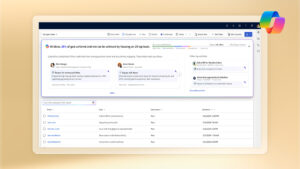
Transforming service operations with Connected Field Service
You have probably heard of Connected Field Service as a buzzword these days, but some of you may still wonder what it actually entails. Field service management (or FSM) typically refers to the management of a company’s resources employed at or en route to the client’s location.1 FSM typically involves the installation, service, maintenance, or repairs of systems equipment and is usually facilitated by software with cloud-based platforms that aid in the management of field service processes.
Connected Field Service is the ability to add connected devices, powered by the Internet of Things (IoT), and leverages cloud capabilities to augment your existing field service operations. It enables organizations to transform the way they provide service from a costly, reactive break-fix model to a proactive and in some cases, even predictive service model through the holistic combination of IoT diagnostics, scheduling, asset maintenance, and inventory on the same platform.
Field service management and automation software like Microsoft Dynamics 365 Field Service creates value for organizations and can help significantly transform service operations by providing the ability to transmit critical information from IoT-powered equipment directly to service providers and technicians via the cloud. This is made possible by the convergence of multiple technologies including real-time data analytics, machine learning, ubiquitous computing, commodity sensors, and embedded systems.
Connected Field Service: Leveling up from traditional field service
Field service typically involves the traditional process of installation, check-up maintenance, and break-fix (repair) appointments. However, without smart sensors in place, this process is often reactive, time-consuming, and puts the onus on the customer to contact the field service organization to log a ticket for any repairs or schedule maintenance.
With Connected Field Service, the transformation to proactive and ultimately predictive service is made possible as downtime can be effectively mitigated through remote monitoring of IoT-enabled devices. Connected IoT devices can automatically transmit alerts regarding equipment operational anomalies to the field service organization, helping to accelerate service response time. In some cases, fixes can be completed remotely, avoiding the need to schedule and dispatch an onsite technician, thereby helping organizations reduce operation costs. This also saves the customer considerable time and money as repairs can now be proactively completed even before the customer becomes aware of an issue or experiences any impact.
Benefits of Connected Field Service
Connected Field Service offers a plethora of advantages, including:
- The ability to predict and proactively prevent breakdowns by identifying underperforming or faulty equipment.
- Improved first-time fix rates and minimizing equipment downtime via proactive IoT alerts from connected devices.
- Resolving issues faster with remote self-healing capabilities by sending device commands to repair or reset equipment, without requiring onsite technician support.
- Reducing maintenance costs through remote monitoring and analysis of device data, and if onsite service is required, to help ensure that the right technician with relevant skill sets is dispatched with the necessary tools needed.
- Providing greater visibility into products, services, performance, and customer satisfaction, and proactively identifying opportunities for improvement using AI-driven data analytics.
Simple setup
Connected Field Service is relatively simple to set up and can be implemented in stages as your organization becomes more comfortable using it. If you are already using a traditional field service management system, the transition to Connected Field Service is straightforward as it is a natural progression.
With Connected Field Service, IoT devices collect relevant information from your equipment—for example, cycle counts, temperature, humidity—and automatically relays it to your field service management system. Machine learning then uses the equipment telemetry data gathered over time to improve responses and provide accurate predictive analytics to enhance your field service management processes.
How Connected Field Service works
As an example, let’s say an IoT sensor is installed on a client’s equipment to collect status reports. The sensor transmits data back to your organization where it is then integrated into your field service software and matched with customer information within your current database. When an anomaly occurs, the error is quickly identified and this data is delivered as an alert via the cloud to the technician en route to the client site, where the complete service history can be viewed in real-time. The data from the IoT sensor helps eliminates the need for the initial onsite diagnostics so that the technician can get right to work in resolving the issue once onsite. A technician with the relevant skillset in that particular issue or anomaly is automatically dispatched via Dynamics 365 Field Service and arrives onsite already armed with critical data relevant to the malfunctioning equipment to resolve the issue.
Enabling business continuity with always-on service in the new normal
The COVID-19 pandemic created an urgent need for contact-free service to protect both field service frontline workers and customers from potential exposure to the virus. During this time, companies reassessed how to enable remote working to accommodate social distancing and other safety precautions, but for field service technicians, the “office” is one client site to another. To safeguard frontline workers and customers, many organizations stopped sending technicians all together or scheduled technicians to only perform service when the customer was absent.
As a result of the global travel restrictions, many companies accelerated the migration to Connected Field Service as it helps to minimize in-person contact to keep both technicians and customers safe. However, that’s just the beginning of the full breadth of benefits. In addition to travel avoidance, service costs were also effectively reduced as the field service organization is now automatically alerted to operational anomalies via IoT-enabled devices. A technician can remotely deploy a fix by sending a command to resolve the issue even before it impacts the customer. The focus of Connected Field Service is the transformation to proactive and ultimately predictive maintenance, turning the field service organization from a cost center to a revenue generator.
Better together
Transform your field service operations today. Come discover how Connected Field Service using Dynamics 365 Field Service, Dynamics 365 Remote Assist, and IoT can help create a seamless service process that enhances customer satisfaction while boosting revenue. Take advantage of smart, internet-ready devices that can detect and diagnose issues, integrating with field service management (FSM) software like Dynamics 365 Field Service, to automatically initiate troubleshooting and, when needed, create work orders to dispatch technicians for onsite service. Learn how you can leverage technology to schedule preventative maintenance based on consumption rather than rely on a regimented schedule. Best of all, enjoy the flexibility of implementing the solution in stages so your team can ramp up via a natural progression.
Learn more about Connected Field Service.
Read about Dynamics 365 Field Service.
Chat with a Field Service expert.




